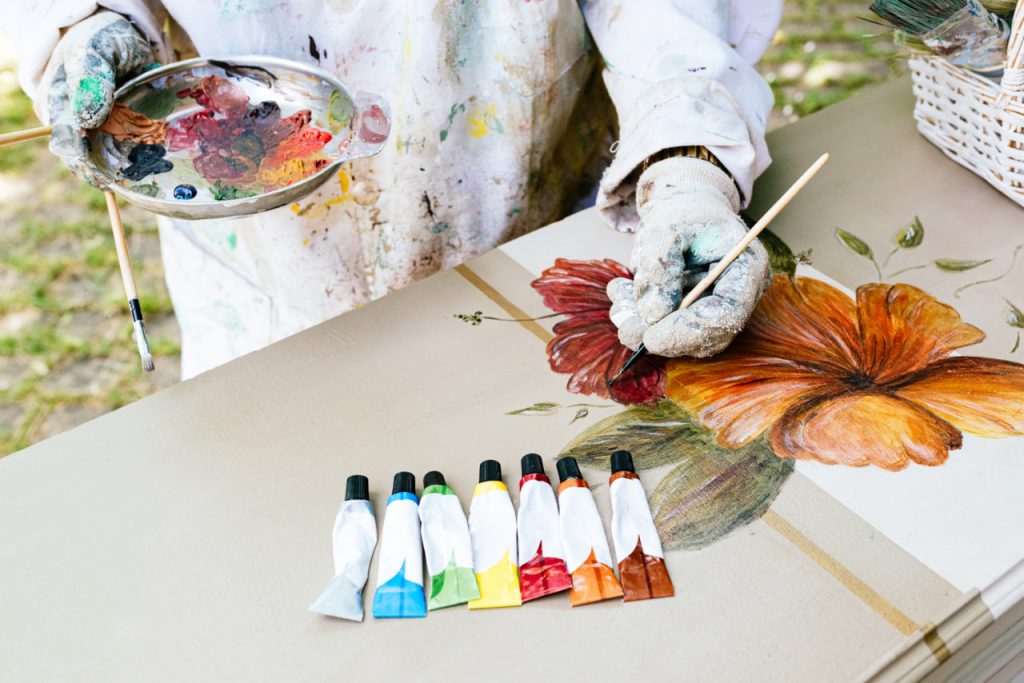Acrylic painting is celebrated for its versatility and accessibility, but to truly unlock its potential, having the right tools and materials is essential. Whether you are just beginning your acrylic painting journey or looking to upgrade your supplies, understanding what tools best suit your style and needs can make a significant difference in your artwork. This guide will walk you through the essential materials and tools, helping you make informed choices for a successful acrylic painting experience.
Selecting the Best Acrylic Paints
The foundation of any acrylic painting is the paint itself. Acrylic paints come in various qualities, from student-grade to professional-grade. Student-grade paints are more affordable but typically contain less pigment and more fillers, resulting in less vibrant colors. Professional-grade paints have higher pigment concentration, providing richer colors and better longevity.
When choosing acrylic paints, consider the following:
- Pigment Quality: Look for paints with high pigment load for better color payoff.
- Opacity: Some colors are naturally transparent while others are opaque. Knowing this helps in layering and glazing.
- Color Range: A well-rounded palette should include primary colors (red, blue, yellow), black, white, and earth tones.
- Brands: Trusted brands like Golden, Liquitex, and Winsor & Newton offer reliable quality for both beginners and professionals.
Brushes and Tools You Need
Brushes are the extension of your hand in painting, so choosing the right brushes is crucial. Acrylics work well with synthetic brushes because they hold their shape despite exposure to water and paint.
Types of brushes to consider:
- Flat Brushes: Ideal for bold strokes, filling large areas, and creating sharp edges.
- Round Brushes: Great for details, lines, and controlled strokes.
- Filbert Brushes: Their oval shape makes them perfect for blending and creating soft edges.
- Fan Brushes: Used for texture effects such as foliage, clouds, or hair.
Besides brushes, you might want to add the following tools:
- Palette Knives: Useful for mixing paint and applying thick layers or textured strokes.
- Sponges: Can create interesting textures and gradients.
- Misting Bottle: Helps keep your paints moist and workable.
Choosing the Right Surface for Acrylics
Acrylics can be applied to a wide variety of surfaces, but each has unique characteristics that influence the final outcome.
- Canvas: The most popular surface, canvas comes pre-stretched or in panels. It provides texture and durability.
- Acrylic Paper: Specially designed to handle acrylic paint without warping.
- Wood Panels: Offer a sturdy, smooth surface that doesn’t flex.
- Other Surfaces: Acrylics can also be used on fabric, glass, metal, and even ceramics, expanding creative possibilities.
Make sure your chosen surface is properly primed, especially for raw canvas or wood, to prevent the paint from soaking in.
Essential Accessories for a Smooth Painting Process
To keep your workspace efficient and your painting process enjoyable, consider these accessories:
- Palette: A palette provides a mixing surface. Glass or plastic palettes are easy to clean.
- Easel: A stable easel helps you maintain proper posture and view your work accurately.
- Rags and Paper Towels: For quick clean-ups and brush maintenance.
- Water Containers: Clean water is essential for rinsing brushes and thinning paint.
- Varnish: To protect finished paintings and enhance color vibrancy.
Tips for Maintaining Your Tools and Materials
Proper care extends the life of your tools and keeps your materials performing at their best.
- Clean Brushes Immediately: Acrylic paint dries fast and can ruin brushes if left to harden.
- Store Paints Properly: Keep tubes tightly sealed and store in a cool, dry place.
- Replace Worn Brushes: Over time, brushes lose their shape and effectiveness.
- Organize Your Workspace: A tidy area helps you focus and work efficiently.

